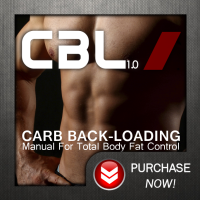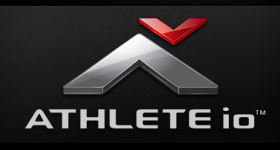Explanations…
Once again, I’ve taken a hiatus from DangerouslyHardcore.com, all but ignoring the site and audience responsible for getting me into EliteFTS.com, Muscle & Fitness, Men’s Fitness, Flex, Power Magazine and as of today, T-Nation. So yeah, I kind of feel like a douche.
I don’t like feeling like an odor-eliminating hygiene device, and, to that end, I’ve actually teamed up with a behind-the-scenes manager who’s promised to kick my ass if I ignore my site again. For me, it means longer days, longer nights and focused activities. For you, it means frequent content, better material and the all important publication of Carb Back-Loading™ and, tight on its heels, The Shockwave Protocol manual. It also means video and audio. To get the best information in the industry out to the masses, I need to use all the tools at my disposal.
The price of doing so is launching a site that’s not 100% ready for primetime. Please bear with me as I refine and transmogrify the site into my vision, which may take some time. Things may break (like the forums), things may disappear (like the forums), random stuff may appear (like the forums will shortly) and the whole site might crash like it did earlier this week, leaving DangerouslyHardcore.com pointing to a GoDaddy parked-for-free-page. I promise to keep glitches at the irritating level at worst, but not devastating.
From here, I can discuss what’s been happening, about the top notch experts I’ve worked with over the last six months or my indoctrination into fitness’s soft underbelly, but, really, it’s nothing that you don’t already suspect, nothing that I haven’t repeated about a thousand times. People are full of shit, and those who aren’t are too busy practicing their craft to be heard. That’s the fine line I rode the past few months—sure I was able to work with high-level athletes, but I had to ignore the community at large to do so.
No more ignoring.
You’ve Got Questions
I thought I’d use this comeback post to answer a few of the frequent questions and comments I’ve received over the last few months via email, Facebook and various sites.
Question: What carbs can you ignore during an ultra-low carb regimen like the first half of the day when Carb Back-Loading or during the week of Carb Nite?
Answer: Ignore only fiber. It’s that simple.
Truth always has a way of finding itself squished by two extremes, and this time is no different. There are two opposing camps. The first says you can’t ignore fiber, that even fiber can introduce too many carbs. What this camp lacks is a full understanding of how fiber metabolizes in the body. Fiber causes none of the normal reactions of carbohydrates, such as raising blood sugar levels or causing a release of insulin, let alone impeding fat burning1-4.
I don’t mean to imply that fiber doesn’t metabolize because it does…with a little help from the gut bacteria we carry. Fiber ferments into short chain fatty acids which then get absorbed through the intestinal wall and used for energy5-29. In general, the body gets about 2.5 calories per gram from fiber. Keep in mind: these calories derive from fat, not carbs. To think or say otherwise is, well, ignorant.
The other camp likes to exclude polyols—sugar alcohols—from the carb count because they claim that eating them affects neither insulin nor blood sugar levels. This is the card Atkin’s played so he could load his diet bars with these creamy-textured, semi-sweet nutrients.
This is true in most cases, sugar alcohols are not glycemic nor insulinotropic substances, but that doesn’t matter here. The body still metabolizes polyols for energy and does so in the absence of insulin, utilizing specialized members of the GLUT family to do so. With all this polyol burning going on, the body stops burning fat30-37. And it’s odd that so many ketogenic diets allow them in such high quantity because it’s been know for about 50 years that polyols stop ketone production38-42. So you tell me, why would anyone market an antiketogenic product to people on a ketogenic diet?
Be sure to include these in your carb count to ensure you don’t go over the 20 to 30 gram mark.
Question: What’s the difference between the Modified Warrior Diet and Carb Back-Loading?
Answer: Where do I start?
For one, Carb Back-Loading is based on science and years of experience and gets results with stupid-simple implementation. For example, the strength and conditioning coach at the University of Richmond, Virginia, Jay DeMayo dropped 9% body fat and gained 7 lbs of muscle over 12 weeks while Carb Back-Loading. His diet couldn’t have been more basic: bacon and eggs during the first half of the day, Wendy’s spicy chicken filets, fries and a frosty for dinner.
The Warrior Diet, by Ori Hofmekler, is Carb Back-Loading taken to its logical conclusion. When doing the Warrior Diet, you pretty much avoid eating for the majority of the day and load up at night. Not eating anything during the first half of the day is metabolically equivalent to not eating carbs for the first half of the day. Then, at night, eat whatever you want. It works for fat loss and works well, but unless you’re massively obese at the outset of the diet, don’t get your hopes up about gaining muscle like Jay did with Carb Back-Loading.
The Modified Warrior Diet (MWD) does not belong to the same ilk as the Warrior Diet or Carb Back-Loading. The technical name as studied in the research is Calorie Back-Loading and it works well for preserving muscle while losing fat43-47. Although MWD’s main proponent often references the science behind Carb Back-Loading to explain why the MWD might work (actually, he just links to my pages about Carb Back-Loading), the same arguments don’t apply. By eating carbs all day, even small amounts, you forfeit the advantages gained by Carb Back-Loading48.
I’m not saying the Modified Warrior Diet won’t do anything—it can help you lose body fat while preserving muscle—but dreams of gaining muscle while losing fat, no matter how many carbs you sneak in, are unwarranted and unfounded.
Question: Should I be eating complex carbs like brown rice or whole grains when back-loading?
Answer: Hell no. You should be eating junk.
If you don’t want to eat junk, then eat the high-glycemic, high-insulinemic clean carbs like white, sticky rice; sweet potatoes, red waxy potatoes, or even pumpkin pie. People consistently fail because they try to eat what’s considered healthy for average people instead of eating for high-performance phenomenon like losing fat while gaining muscle.
This is also where the Modified Warrior Diet goes wrong, by recommending low-glycemic carbs in the evening. This ignores essential hormonal reactions that make Carb Back-Loading seem like magic. The high, sharp spikes of insulin trigger glycogen storage and resynthesis, and also increase the muscle’s ability to use carbs during subsequent training sessions49-55. The spikes also subside quickly when eating junk. The spikes are down to baseline or below shortly after going to sleep. Why is this important? Because your nightly rush of growth hormone won’t take place until at least two hours after insulin levels fall back to baseline56-57.
By eating low-glycemic foods at night you actually stop a great deal of fat burning that would normally occur throughout the evening. Cookies, donuts and French fries for all…
Take-Away Message
I’m not like most of the people in the industry who have their pet ideas, say outrageous things and hope all goes well. Sure, sneaking carbs into the first half of the day, even if keeping calories light (the Modified Warrior Diet) is easier than Carb Back-Loading, but it destroys the effectiveness. And low-glycemic carbs might sound like a good recommendation since Dr. Oz says so, but that’s for average, fat, inactive people, not Super-Heroes In Training (SHIT™—that’s right, I’m trademarking SHIT, deal with it).
I do my homework and there’s a scientific and experiential reason why I say to do anything and everything. That’s why Carb Back-Loading seems like magic. That’s why Carb Nite® shreds people down. I don’t have to sound sciency to convince anyone—just try it. A recent comment by someone on Facebook says it all: I lost four inches on my waist and I’m still not sure if I understand what the hell Kiefer said. In short, my SHIT™ works.
That’s it for now. This is only a teaser to let everyone know I’m still alive and well and back on track to create the most reliable resource of scientifically based training and nutrition information in the world.
References
- Prosky L. What is dietary fiber? J AOAC Int. 2000 Jul-Aug;83(4):985-7.
- Prosky L. Inulin and oligofructose are part of the dietary fiber complex. J AOAC Int. 1999 Mar-Apr;82(2):223-6.
- Asp NG. Classification and methodology of food carbohydrates as related to nutritional effects. Am J Clin Nutr. 1995 Apr;61(4 Suppl):930S-937S. Review.
- Trowell H. The development of the concept of dietary fiber in human nutrition. Am J Clin Nutr. 1978 Oct;31(10 Suppl):S3-S11.
- Sunvold GD, Hussein HS, Fahey GC Jr, Merchen NR, Reinhart GA. In vitro fermentation of cellulose, beet pulp, citrus pulp, and citrus pectin using fecal inoculum from cats, dogs, horses, humans, and pigs and ruminal fluid from cattle. J Anim Sci. 1995 Dec;73(12):3639-48.
- Titgemeyer EC, Bourquin LD, Fahey GC Jr, Garleb KA. Fermentability of various fiber sources by human fecal bacteria in vitro. Am J Clin Nutr. 1991 Jun;53(6):1418-24.
- Bourquin LD, Titgemeyer EC, Fahey GC Jr. Vegetable fiber fermentation by human fecal bacteria: cell wall polysaccharide disappearance and short-chain fatty acid production during in vitro fermentation and water-holding capacity of unfermented residues. J Nutr. 1993 May;123(5):860-9.
- Bourquin LD, Titgemeyer EC, Fahey GC Jr, Garleb KA. Fermentation of dietary fibre by human colonic bacteria: disappearance of, short-chain fatty acid production from, and potential water-holding capacity of, various substrates. Scand J Gastroenterol. 1993 Mar;28(3):249-55.
- Bourquin LD, Titgemeyer EC, Garleb KA, Fahey GC Jr. Short-chain fatty acid production and fiber degradation by human colonic bacteria: effects of substrate and cell wall fractionation procedures. J Nutr. 1992 Jul;122(7):1508-20.
- Daniel M, Wisker E, Rave G, Feldheim W. Fermentation in human subjects of nonstarch polysaccharides in mixed diets, but not in a barley fiber concentrate, could be predicted by in vitro fermentation using human fecal inocula. J Nutr. 1997 Oct;127(10):1981-8.
- Fernandes J, Rao AV, Wolever TM. Different substrates and methane producing status affect short-chain fatty acid profiles produced by In vitro fermentation of human feces. J Nutr. 2000 Aug;130(8):1932-6.
- Dongowski G, Lorenz A, Anger H. Degradation of pectins with different degrees of esterification by Bacteroides thetaiotaomicron isolated from human gut flora. Appl Environ Microbiol. 2000 Apr;66(4):1321-7.
- Topping DL, Clifton PM. Short-chain fatty acids and human colonic function: roles of resistant starch and nonstarch polysaccharides. Physiol Rev. 2001 Jul;81(3):1031-64. Review.
- Fleming SE, Rodriguez MA. Influence of dietary fiber on fecal excretion of volatile fatty acids by human adults. J Nutr. 1983 Aug;113(8):1613-25.
- Ehle FR, Robertson JB, Van Soest PJ. Influence of dietary fibers on fermentation in the human large intestine. J Nutr. 1982 Jan;112(1):158-66.
- Wisker E, Daniel M, Rave G, Feldheim W. Short-chain fatty acids produced in vitro from fibre residues obtained from mixed diets containing different breads and in human faeces during the ingestion of the diets. Br J Nutr. 2000 Jul;84(1):31-7.
- Mortensen PB, Holtug K, Rasmussen HS. Short-chain fatty acid production from mono- and disaccharides in a fecal incubation system: implications for colonic fermentation of dietary fiber in humans. J Nutr. 1988 Mar;118(3):321-5.
- Salvador V, Cherbut C, Barry JL, Bertrand D, Bonnet C, Delort-Laval J. Sugar composition of dietary fibre and short-chain fatty acid production during in vitro fermentation by human bacteria. Br J Nutr. 1993 Jul;70(1):189-97.
- Miller TL, Wolin MJ. Fermentation by the human large intestine microbial community in an in vitro semicontinuous culture system. Appl Environ Microbiol. 1981 Sep;42(3):400-7.
- Siragusa RJ, Cerda JJ, Baig MM, Burgin CW, Robbins FL. Methanol production from the degradation of pectin by human colonic bacteria. Am J Clin Nutr. 1988 May;47(5):848-51.
- Ross AH, Eastwood MA, Brydon WG, Anderson JR, Anderson DM. A study of the effects of dietary gum arabic in humans. Am J Clin Nutr. 1983 Mar;37(3):368-75.
- Tomlin J, Read NW. The relation between bacterial degradation of viscous polysaccharides and stool output in human beings. Br J Nutr. 1988 Nov;60(3):467-75.
- Stephen AM. Whole grains–impact of consuming whole grains on physiological effects of dietary fiber and starch. Crit Rev Food Sci Nutr. 1994;34(5-6):499-511. Review.
- Stark AH, Madar Z. In vitro production of short-chain fatty acids by bacterial fermentation of dietary fiber compared with effects of those fibers on hepatic sterol synthesis in rats. J Nutr. 1993 Dec;123(12):2166-73.
- Hara H, Haga S, Kasai T, Kiriyama S. Fermentation products of sugar-beet fiber by cecal bacteria lower plasma cholesterol concentration in rats. J Nutr. 1998 Apr;128(4):688-93.
- Kishimoto Y, Wakabayashi S, Takeda H. Hypocholesterolemic effect of dietary fiber: relation to intestinal fermentation and bile acid excretion. J Nutr Sci Vitaminol (Tokyo). 1995 Feb;41(1):151-61.
- Nordgaard I, Mortensen PB, Langkilde AM. Small intestinal malabsorption and colonic fermentation of resistant starch and resistant peptides to short-chain fatty acids. Nutrition. 1995 Mar-Apr;11(2):129-37.
- Jenkins DJ, Kendall CW, Vuksan V, Augustin LS, Li YM, Lee B, Mehling CC, Parker T, Faulkner D, Seyler H, Vidgen E, Fulgoni V. The effect of wheat bran particle size on laxation and colonic fermentation. J Am Coll Nutr. 1999 Aug;18(4):339-45.
- Beyer-Sehlmeyer G, Glei M, Hartmann E, Hughes R, Persin C, Bohm V, Rowland I, Schubert R, Jahreis G, Pool-Zobel BL. Butyrate is only one of several growth inhibitors produced during gut flora-mediated fermentation of dietary fibre sources. Br J Nutr. 2003 Dec;90(6):1057-70.
- Salminen S, Salminen E, Marks V. The effects of xylitol on the secretion of insulin and gastric inhibitory polypeptide in man and rats. Diabetologia. 1982 Jun;22(6):480-2.
- Forster H, Boecker S, Zagel D. Comparison of side effects of infusion of glucose and glucose substitutes at different doses. Z Ernahrungswiss. 1978 Dec;17(4):224-39.
- Forster H. Fructose and sorbitol as energy-supplying substrates for parenteral nutrition. Infusionsther Klin Ernahr. 1987 Jun;14(3):98-109.
- Pellaton M, Acheson K, Maeder E, Jequier E, Felber JP. The comparative oxidation of glucose, fructose, sorbitol and xylitol in normal man. JPEN J Parenter Enteral Nutr. 1978 Nov;2(5):627-33.
- Makinen KK. Effect of long-term, peroral administration of sugar alcohols on man. Swed Dent J. 1984;8(3):113-24.
- Wang YM, van Eys J. Nutritional significance of fructose and sugar alcohols. Annu Rev Nutr. 1981;1:437-75. Review.
- Nilsson U, Jagerstad M. Hydrolysis of lactitol, maltitol and Palatinit by human intestinal biopsies. Br J Nutr. 1987 Sep;58(2):199-206.
- de Kalbermatten N, Ravussin E, Maeder E, Geser C, Jequier E, Felber JP. Comparison of glucose, fructose, sorbitol, and xylitol utilization in humans during insulin suppression. Metabolism. 1980 Jan;29(1):62-7.
- Bassler KH, Fingerhut M, Czok G. Inhibition of fatty acid oxidation as a factor in the antiketogenic effect of sugars and polyalcohols. Klin Wochenschr. 1966 Aug 1;44(15):899-900.
- Bassler KH, Dreiss G. Antiketogenic effect of xylitol in alloxan-diabetic rats. Klin Wochenschr. 1963 Jun 15;41:593-5.
- Rawat AK, Menahan LA. Antiketogenic action of fructose, glyceraldehyde, and sorbitol in the rat in vivo. Diabetes. 1975 Oct;24(10):926-32.
- Exton JH, Edson NL. The antiketogenic action of sorbitol. Biochem J. 1964 Jun;91(3):478-83.
- Blakley RL. The metabolism and antiketogenic effects of sorbitol; sorbitol dehydrogenase. J Biochem (Tokyo). 1951 Aug;49(3):257-71.
- Keim NL, Van Loan MD, Horn WF, Barbieri TF, Mayclin PL. Weight loss is greater with consumption of large morning meals and fat-free mass is preserved with large evening meals in women on a controlled weight reduction regimen. J Nutr. 1997 Jan;127(1):75-82.
- Hirsh E, Halberg F, Goetz FC, Cressey D, Wendt H, Sothern R, Haus E, Stoney P, Minors D, Rosen G, Hill B, Hilleren M, Garet K. Body weight change during 1 week on a single daily 2000-calorie meal consumed as breakfast (B) or dinner (D). Chronobiologia 1975;2(suppl 1): 31-32.
- Jacobs H, Thompson M, Halberg E, Halberg F, Fraeber C, Levine H, Haus E. Relative body weight loss on limited free-choice meal consumed as breakfast rather than as dinner. Chronobiologia 1975;2(suppl 1): 33.
- Halberg F. Some aspects of the chronobiology of nutrition: more work is needed on “when to eat”. J Nutr. 1989 Mar;119(3):333-43. Review.
- Sensi S, Capani F. Chronobiological aspects of weight loss in obesity: effects of different meal timing regimens. Chronobiol Int. 1987;4(2):251-61.
- Martin A, Normand S, Sothier M, Peyrat J, Louche-Pelissier C, Laville M. Is advice for breakfast consumption justified? Results from a short-term dietary and metabolic experiment in young healthy men. Br J Nutr. 2000 Sep;84(3):337-44.
- Kaastra B, Manders RJ, Van Breda E, Kies A, Jeukendrup AE, Keizer HA, Kuipers H, Van Loon LJ. Effects of increasing insulin secretion on acute postexercise blood glucose disposal. Med Sci Sports Exerc. 2006 Feb;38(2):268-75.
- Wee SL, Williams C, Tsintzas K, Boobis L. Ingestion of a high-glycemic index meal increases muscle glycogen storage at rest but augments its utilization during subsequent exercise. J Appl Physiol. 2005 Aug;99(2):707-14.
- Stevenson E, Williams C, Nute M, Swaile P, Tsui M. The effect of the glycemic index of an evening meal on the metabolic responses to a standard high glycemic index breakfast and subsequent exercise in men. Int J Sport Nutr Exerc Metab. 2005 Jun;15(3):308-22.
- Stevenson E, Williams C, Biscoe H. The metabolic responses to high carbohydrate meals with different glycemic indices consumed during recovery from prolonged strenuous exercise. Int J Sport Nutr Exerc Metab. 2005 Jun;15(3):291-307.
- van Loon LJ, Saris WH, Kruijshoop M, Wagenmakers AJ. Maximizing postexercise muscle glycogen synthesis: carbohydrate supplementation and the application of amino acid or protein hydrolysate mixtures. Am J Clin Nutr. 2000 Jul;72(1):106-11.
- Piehl Aulin K, Söderlund K, Hultman E. Muscle glycogen resynthesis rate in humans after supplementation of drinks containing carbohydrates with low and high molecular masses. Eur J Appl Physiol. 2000 Mar;81(4):346-51.
- Ivy JL, Katz AL, Cutler CL, Sherman WM, Coyle EF. Muscle glycogen synthesis after exercise: effect of time of carbohydrate ingestion. J Appl Physiol. 1988 Apr;64(4):1480-5.
- Schnure JJ, Raskin P, Lipman RL. Growth hormone secretion during sleep: impairment in glucose tolerance and nonsuppressibility by hyperglycemia. J Clin Endocrinol Metab. 1971 Aug;33(2):234-41.
- VanderLaan WP. Changing concepts on the control of growth hormone secretion in man. Calif Med. 1971 Aug;115(2):38-46. Review.










Recent Comments